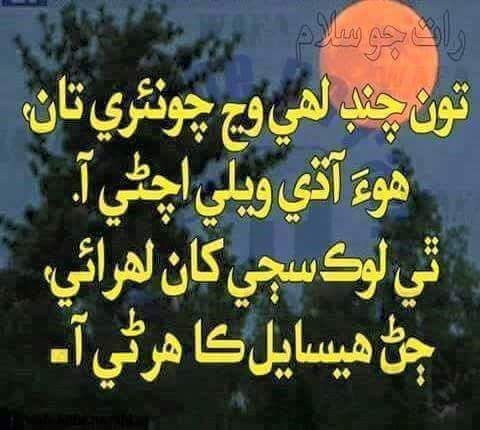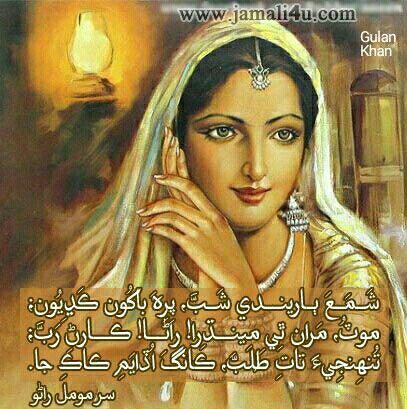
THERE IS WOMAN ……..
……..SO THERE IS POETRY
By Dr. Moti Prakash
No authentic information is available on the existence of Sindhi Literature before the Soomra and Sama regimes in Sindh. There is a possibility that either there was no Sindhi literature at all, or it was never put in writing due to absence of any script, or the Arab conquerors had destroyed it, when they invaded Sind.
During the Soomra and Sama rule (1050 – 1520 A.D.) Sindhi bait had reached the lips of a commoner and Ghah, Gech, Doha, Sortha and Lorao forms of verse existed.
In the works of the poets of Soomra regime, which are full of emotional outburst, there exists an effort to express, but the compositions lack the ability to convey the thoughts in a clear and unambiguous form, which otherwise could have laid the foundation of a unique tradition in poetry. Folk tales of ‘Umar Marvi’, ‘Sasi Punhun’, ‘Suhini Mehar’ and ‘Moomal Rano’ (all woven around the character of woman), were no doubt popular, but there is a dispute regarding their origin. ‘Dodo Chanesar’, a folk tale, which depicts woman and holds her in high esteem is attributed to Bhagu Bhan (1213 A.D.) Chanesar’s respect and regard for his mother is vividly described. At the time when the courtiers gathered to choose one of the brothers – Dodo and Chanesar to be the ruler, Chanesar wished to go and seek guidance from his mother and lost his throne! This instance in the history of Sind establishes that woman held high position in Society.
Second phase of the classical poetry was that of written poetry. Prominent among the poets of this phase were Qazi Qadam, Shah Abdul Karim, Lutf Ullah Qadri and Shah Innat. These poets were influenced by political, social, and economic conditions prevailing in Sind. During the reign of Arghoons and Turkhans, Sind was in the grip of great upheavals and a victim of atrocities on the natives, which upset the social pattern of the country. The Mughals who were lovers of literature and patrons of art recognized the talented litterateurs and honoured them in their courts. Though in the days of Arghoons, Turkhans and Mughals, Persian was the official language, yet the poets mentioned above wrote in the Sindhi language.
In short, Sindhi poetry, prior to Shah Abdul Lateef was influenced by :
(1) Folk Literature of Sind
(2) Persian-Sufi Poetry
(3) Saint poets of India.
Seven ‘Baits’ of Qazi Qadan, (around 1462 – 1551 A.D.) were described as ‘shining stars’ or ‘glittering jewels’ of Sindhi verse by scholars. There is a superfluous picture of woman in the ‘baits’ of Qazi Qadan. Instead of describing her as ‘weak’ and ‘humble’, the poet has portrayed her as a ‘foolish’ and ‘careless’ person who takes no notice of ‘jewel of life’ lying at her feet. He also portrays her as a ‘seeker’ on the path of love for God, who is restless to have union with ‘the sought’. Qazi Qadan has selected only two heroines of folk tales ‘Sasui’ and ‘Suhini’.
Shah Abdul Karim (1538 – 1622 A.D.) has for the first time described a woman who is hard-working. He has also painted the picture of a woman who longs for love (Sasui as the lady who carries one pitcher over the other on her head and appears like a bird on the surface of water – my beloved is always in my mind and soul), conscious of society as well (Suhini). She suffers the pangs of separation (Sasui) and repentance (Lila). She is also faithful and loyal (Marui).
For the first time most of the heroines of folk tales find their mention and appropriate use of Sindhi sayings and proverbs is made in the verse of Shah Karim.
Shah Lutfullah Qadri (1611 – 1679 A.D.) is the author of ‘Tuhf-e-Al-Salkin’ and ‘Manhaj Al Marfat’ in Persian Language. He composed Sindhi Risalo with a laudable aim to convey to the Sindhis certain finer values. He made allegorical use of new subjects concerning ‘Seafarers’ and ‘Boatmen’, ‘Jogis’ and ‘Sanyasis’. His baits are effective due to repetition of idiom. Portrayal of woman in his verse is also allegorical. He describes the love and longings of a woman, as those of a seeker of God. He says : Oh beloved I am unable to conceal my love in my heart, the more I try to suppress it the more it bursts out uncontrollably.
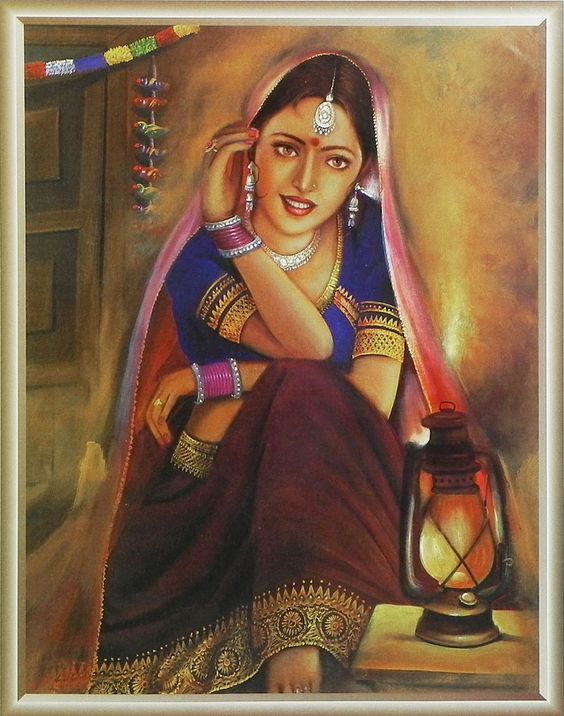 Shah Innat, the last of the classical poets epitomized the beauty and charm of woman in a realistic and vivid manner. He was the first poet to describe physical beauty of woman, strangely enough one of them is Marui, who has been described by all the poets as a simple village woman deeply attached to her soil and devoted to her husband. To him Marui’s beauty was like lightning.
Shah Innat, the last of the classical poets epitomized the beauty and charm of woman in a realistic and vivid manner. He was the first poet to describe physical beauty of woman, strangely enough one of them is Marui, who has been described by all the poets as a simple village woman deeply attached to her soil and devoted to her husband. To him Marui’s beauty was like lightning.
Shah Abdul Lateef 1689-1752 A.D.
Portrayal of Woman in Fullness
Shah Abdul Lateef was a strong link between the classical and modern Sindhi poetry. His simplicity of style, spontaneity of thought, versatility and appropriate usage of words and phrases and felicity of expression remained unsurpassed. When the poetry of the world was the source of entertainment of a particular class, Shah chose most of his heroes and heroines from amongst the masses. It is only in ‘Shah Jo Risalo’ that we find woman’s portrayal in its fullness, unparalleled in all the periods of Sindhi poetry.
Shah, with his effective use of metaphors and similies has described not only the beauty and innocence, but also the love and unrest, separation and tryst, truthfulness and loyalty, weakness and humility of a woman, presumably because his state of mind could express itself through no better form than in the guise of a woman.
Shah compares the beauty of woman with the light of the sun and the moon. The eyes of Moomal pierce through the heart and Noorie is beauty personified from top to toe. Shah describes the parts of woman’s body as well. He compares her eyes with an axe that kills, a diamond that cuts and a plier that pulls. Sasui’s feet are described as soft as silk.
Beauty and adornment go hand in hand. The heroines of Shah – Suhini, Moomal and Lila and Sasui are always richly dressed and ornamented. They use scents and sandalwood and wear silks and gold. Suhini, when swallowed by the surging waters of Chanab, leaves them full of fragrance. Marui’s friends use sandalwood in their hair.
Shah’s woman is steadfast in love.
Outer difficulties, torments and impositions do not make her weak. Suhini plunges into the mighty waves of Chanab in winter; Moomal keeps the gates of her palace open, lighting oil lamps and waiting for Rano; Sasui unfamiliar with the paths, wanders in search of Punhun through deserts and jungles all alone. For Shah, urge/quest is the only criterion of measuring the genuineness of love.
Shah’s woman is humble and completely devoted to her husband. She recognizes that her lover always has an upper hand. Physical beauty does attract a man, but in the long run, he expects patience and humility from a woman. At times when Shah’s woman becomes haughty, she soon repents it.
Despite Shah’s heroines being great believers that they shall not be tricked or hoaxed (Moomal and Sasui) and that their selflessness and fearlessness in love shall not go unrewarded (Lila and Suhini) the fact remains that they are women first, vulnerable to suspicion. One suspects her lover/husband of having a mistress (Moomal) and the other suspects her in-laws of being class conscious (Sasui), considering her inferior. Marvi feels that her parents, for whom she had been shedding tears, doubt her loyalty.
Shah’s heroines are also prone to superstition. Sasui suspects that there is a conspiracy against her husband’s returning to her and Lila remembers a bad omen at the time of her wedding with Chanesar. Vanjari the love-lorn wife of a trader lights the oil lamps and offers prayers to sea-god for the safe return of her husband.
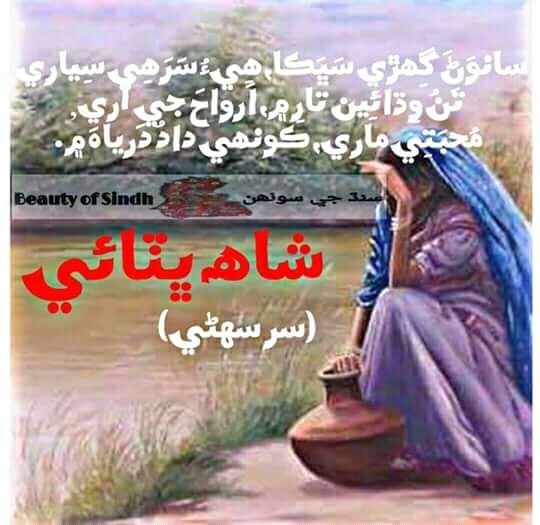 Tasavvuf, Sindhi Poetry and Woman
Tasavvuf, Sindhi Poetry and Woman
Sindhi Tasavvuf is influenced by the Indian philosophy esoterically and exotically. It is not purely Islamic. Sindhi poets often, under the influence of Vedant, have identified themselves with Sasui, Moomal, Suhini and Marvi who searched for the beloved. The qualities of a woman that impressed Sindhi Sufi poets are : her respect for her husband, her acceptance of the fact that God is One, her belief in immortal love and her complete surrender at the time of Vasl. These poets, instead of taking up ‘woman’ as a subject in itself have represented her as a symbol and also as an Allegory at times.
Woman in the Works of Sufi Poets
Sufi thought, in Sindhi poetry, is as old as the poetry itself. However, it came as a force to reckon with in the 16th century and achieved its zenith in the poetry of ‘Sachal Sarmast’, Bekas and Bedil of Rohri and scores of other poets. These poets found woman an embodiment of simplicity, innocence and humility. They have, therefore, addressed their beloved in the guise of a woman. They made use of folk tales of ‘Sasui Punhun’, ‘Heer Ranjha’, ‘Suhini Mehar’, ‘Moomal Rano’ etc.
Sachal’s woman (e.g. Moomal) does not remember anything but her lover. She is at his mercy and willing to be his slave. When she suffers the pangs of separation, she becomes disinterested with the world and her soul laments for union with him.
Sachal, praising the beauty of a woman has described her face, eyes, hair, forehead, often comparing them with Qoran, army of beauty and the buds etc. Though his poems lack this serenity and the dramatic art which Shah’s poems are full of Sachal’s poems show steadfastness in love, fearlessness in expression and hatred for the ostentation in religion and caste.
According to Vedantic philosophy, woman has no existence but in her husband’s heart. She has to accept her husband with all his virtues and vices and remain loyal to him in all adversities.
Sami is the only poet to have presented his ‘Suhaagin’ (married woman) as the ideal Indian woman in Sindhi poetry. He identifies ‘Suhaagin’ with the seeker and her husband with God. She is a loyal, devoted, selfless being, who has to serve her husband with the utmost patience and become ‘Queen of Queens’, loved by her parents and in-laws alike. Humility and patience and not the artificial ornaments are her real adornments.
Inspired by the National Movement and Gandhiji’s ideals of Ahimsa and Satya, Bewas viewed woman in the social context and portrayed her as a companion of man. His poem ‘Aurat’ is a glittering example of his tribute to that finest creation of beauty. “When that Oneness was caught up with the idea of manifesting itself, it donned the garb of a woman, so that beauty became a force”. He portrayed Shakuntala as a bashful, blooming beauty, unable to express her feelings due to fear of society. For the first time in Sindhi poetry, Bewas paid a woman labourer a glowing tribute as a hard working companion of her husband.
A peculiar service that Bewas rendered to Sindhi poetry was that he inspired and guided a band of young men to complete the revolution he had brought about. Hundraj Dukhayal, Hari Dilgir, Prabhu Wafa are foremost among his followers.
Hundraj Dukhayal is the first poet to make a simple village woman immortal in his compositions by painting her in different pictures of a love-lorn maiden and a housewife, clamouring against the injustice done to a widow, and the social bindings. He also portrayed the characters of Marvi, Sasui, Moomal, Laila and Heer in scores of lyrics and also wrote about Seeta and Radha.
Hari Dilgir who started composing poems for children, made a significant contribution in the field of poetry from 1940 onwards. He has departed from the traditional portrayal of woman and has ridiculed the traditional concept of woman who is born to accept anything that comes from her husband. (Ref. Pati Devta). According to him woman is the companion of man throughout his life.
Prabhu Wafa, the fourth of the poets of Bewas’s school has a collection of poems to his credit. His poems are a beautiful combination of affection and tenderness, depth of sentiment and freshness of feeling. He describes the beauty of woman vividly. To Wafa goes the credit of portraying woman as a housewife.
To Dilgir and Prabhu Wafa goes the credit of viewing the woman as a mother, a sister and a housewife. Both of them have amply described woman’s spirit of self-sacrifice and devotion.
Progressive Poetry and Portrayal of Woman
Socialistic ideology and progressive trends in Sindhi poetry became a dominant force from 1942. Inspired by Marxist philosophy, these trends were based on the maxim of ‘Art for Life’s Sake’. Initially some of the poets maintaining this trend were more propagandist in approach, but as they matured, viewing the day to day life, breaking the bindings of prosodic poetry, returning to the characters of folk tales, filled with the feeling of Sindhism, they embraced humanistic values that are traditional in Sindhi poetry.
A band of young poets led by Sheikh Ayaz in Sind and Arjan Shad, Sugan Ahuja, Ishwar Aanchal and Kishin Rahi and Moti Prakash in India did much to contribute to Sindhi poetry in post-partition period. In Sind, Tanveer Abbasi, who presents his woman as a symbol of patriotism also emerged as a poet of good calibre.
These poets felt that woman cannot break the shackles of male domination unless she was economically independent. This trend emphasized the equality of man and woman in all respects and treated woman, Gorky’s ‘Mother’ as its model. These poets had down to earth approach towards woman, her beauty, love, life, sex, social bindings and her rebellion against injustice.
Woman in the Poetry of Ziya, Khadim & Bharati
There are, however other poets, who have portrayed woman during this period. The chief among them being Parsram Ziya, Sadarangani “Khadim”, Govardhan Bharati and Lakhmeechand Prem.
Ziya trodded on the model of Persian poetry in his “Tasveer-e-Ahsaas’ (1943), but got himself free from Persian influence immediately after partition when he portrayed a simple village woman ‘Pohu Mau’, offering her comments upon the partition of the country while cleaning dirty clothes on the bank of a rivulet. His portrayal of a young, modern damsel prepared to break all barriers for the sake of her lover and inspiring him to muster up courage when he shows signs of weakness, was outstanding.
His poem ‘Dhia Jo Piu De Khat’ was a sharp commentary on the evil system of dowry.
Dr. Haroomal ‘Khadim’ is another poet of merit who saw woman in social context and who with extreme simplicity of thought and expression puts forth his feelings and sentiments. His poem ‘Chhorai’ describes indirectly the importance of woman in man’s life.
Govardhan Bharati, who wrote songs to suit every occasion, is a lyrical poet, and has a number of collections of poems to his credit. After freedom he is the only poet in India to have portrayed the character of Shah’s heroines in his compositions.
Arjan Hassid, who strongly feels that the entire universe is dependent upon woman, regrets that man has not yet been able to recognize her worth.
That after the freedom of the country, Sindhi poetry in Sind is known and recognized through Sheikh Ayaz and in India through Narayan Shyam, is a fact that none would deny. These two poets, with the inter-mixture of classical and modern thought have given birth to the character of a new woman, who, on the one hand is egoistic, generous and bold and on the other hand has the beauty of Kalidasa’s Shakuntala, the simplicity of Sita, the patriotism of Marvi, the love of Suhini and the weakness of Lila.
After Dukhayal, it is Ayaz who portrayed woman of the soil in all its fullness. He portrayed woman with all subtlety and sublimation, using beautiful metaphors and similies. He gave new diction to poetry with a fragrance of ingenuity. His woman presents a tragic picture in separation. She remembers her lover when spring approaches or southern winds blow, piercing her tender heart. His damsel becomes self-conscious when she finds her clothes wet due to a pitcher of water being on her head.
With the freshness of thought and style and description of his own, Ayaz has portrayed the apparent as well as the inherent aspects of a woman’s character and beauty.
Narayan Shyam, the foremost among the poets of the present generation, showed the signs of breaking away from the set trends when he wrote ‘Thado javal bar’ and ‘Mamta’ in his collection of poems “Makaphara”, published in association with Dilgir. Shyam touched very sensitive and hidden aspects of a woman’s life, not attempted by any poet hitherto and succeeded in making a complete departure in his portrayal of woman. His ‘Roop Maya’ comes near only to classical Sanskrit poetry, in which he has not only painted the picture of a beautiful woman (Menaka), but has also woven her feelings, spontaneity, love and union as pearls of words.
The partition of the country wrecked the iron clad social structure of woman, who was forced to leave the four walls of her house and come out in the open struggle for survival, which in the process led to shedding many social taboos and inhibitions surrounding her. This aspect was reinforced quite clearly in the poetry under the influence of progressive ideology.
_____________________
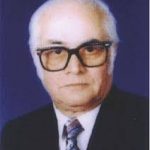 Dr. Moti Prakash (15 May 1931 – 4 August 2015) was a renowned research scholar and educationist. This article is an abridged version of his PhD thesis revealing insights on women in Sindhi poetry.
Dr. Moti Prakash (15 May 1931 – 4 August 2015) was a renowned research scholar and educationist. This article is an abridged version of his PhD thesis revealing insights on women in Sindhi poetry.
Courtesy: Sindhi Shan (Oct. – Dec. 2002 issue)
